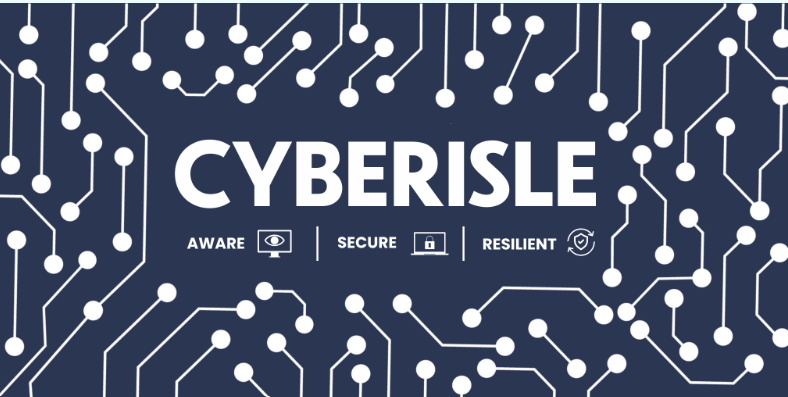Sustainable IT
Transforming Business Through Green Technology in 2024
In an era where environmental consciousness takes centre stage, sustainable IT has evolved from a niche concern to a critical business imperative. As organisations face mounting pressure to reduce their carbon footprint while maintaining a technological edge, the convergence of sustainability and IT is unlocking unprecedented opportunities for innovation, efficiency, and cost savings. From cloud computing to green software development, sustainable IT practices are transforming the way businesses operate and positioning them for long-term success in an increasingly eco-conscious world.
The Business Case for Sustainable IT
Beyond the environmental impact, sustainable IT practices offer a range of tangible business benefits that are driving widespread adoption:
• Cost Savings: Measures like cloud migration, smart infrastructure management, and circular IT asset management can significantly reduce energy consumption and operational expenditures.
• Regulatory Compliance: Proactive environmental stewardship helps companies stay ahead of evolving green IT regulations and avoid costly fines or penalties.
• Brand Enhancement: A strong sustainability reputation can boost customer loyalty, attract eco-conscious talent, and differentiate the business in a crowded market.
• Operational Efficiency: Strategies like energy-efficient programming and sustainable AI practices optimise resource utilisation and improve overall system performance.
• Future-Proof Operations: By embedding sustainability into their IT infrastructure and practices, organisations position themselves to better withstand potential future environmental regulations or supply chain disruptions.
The Green Data Revolution
Cloud Computing's Environmental Impact
The shift to cloud computing represents one of the most significant opportunities for reducing IT-related emissions. Recent studies suggest that cloud migrations can reduce an business's carbon footprint by up to 90% compared to on-premises solutions. This dramatic reduction comes from:
• Optimised Resource Utilisation: Cloud providers' sophisticated load-balancing and resource-sharing capabilities
• Energy-Efficient Infrastructure: Modern hyperscale data centers utilising advanced cooling technologies
• Renewable Energy Integration: Major cloud providers' commitment to 100% renewable energy operations
Smart Infrastructure Management
Organisations are increasingly deploying smart building management systems that leverage IoT sensors and AI to minimise energy consumption.
These systems can:
• Automatically adjust cooling based on server load
• Power down unused systems during off-peak hours
• Predict and prevent energy-wasteful equipment failures
Sustainable Hardware Strategies
Circular IT Asset Management
Forward-thinking companies are adopting circular economy principles in their IT operations:
1.Extended Lifecycle Management
o Implementing predictive maintenance to extend hardware life
o Choosing modular designs that support component-level updates
o Establishing repair programs instead of default replacements
2.E-Waste Reduction
o Creating formal recycling partnerships with certified vendors
o Implementing buy-back programs for end-of-life equipment
o Tracking device lifecycles with blockchain-enabled asset management
3.Sustainable Procurement
o Prioritising vendors with proven environmental credentials
o Selecting energy-efficient equipment with recognised certifications
o Considering refurbished and remanufactured options
Green Software Development
Energy-Efficient Programming
Developers are increasingly considering the environmental impact of their code:
•Efficient Algorithms: Optimising code to reduce computational overhead
•Green Hosting: Selecting environmentally conscious hosting providers
•Resource-Aware Development: Building applications that minimise battery drain and processor usage
Sustainable AI Practices
Organisations are reimagining AI development with sustainability in mind:
• Training models during off-peak energy hours
• Implementing edge computing to reduce data center load
• Using transfer learning to minimise training requirements
Measuring and Reporting Impact
Environmental Metrics
Modern IT departments are adopting comprehensive sustainability metrics:
• Carbon emissions per digital service
• Energy efficiency ratings for data centres
• E-waste reduction and recycling rates
• Water usage effectiveness (WUE)
Reporting Tools
New technologies enable precise tracking of environmental impact:
• Real-time energy monitoring systems
• Carbon footprint calculators for cloud workloads
• Sustainability reporting dashboards
Implementation Roadmap
1. Assessment
o Audit current IT infrastructure
o Identify high-impact opportunities
o Establish baseline metrics
2. Strategy Development
o Set clear sustainability targets
o Align with business objectives
o Develop implementation timeline
3. Execution
o Deploy monitoring tools
o Implement priority initiatives
o Train staff on sustainable practices
4. Continuous Improvement
o Monitor and measure results
o Adjust strategies based on data
o Scale successful initiatives
Looking Ahead
The future of sustainable IT lies in the convergence of environmental responsibility and technological innovation. Organisations that embrace this transformation will not only reduce their environmental impact but also create resilient, future-ready operations. As we move forward, sustainable IT will continue to evolve, offering new opportunities for organisations to lead in environmental stewardship while maintaining technological excellence. By proactively investing in sustainable IT practices, businesses can position themselves for long-term success in an increasingly eco-conscious world.
[Note: Keep updated with the latest sustainable IT practices and regulations as they continue to evolve rapidly in this dynamic field.]




